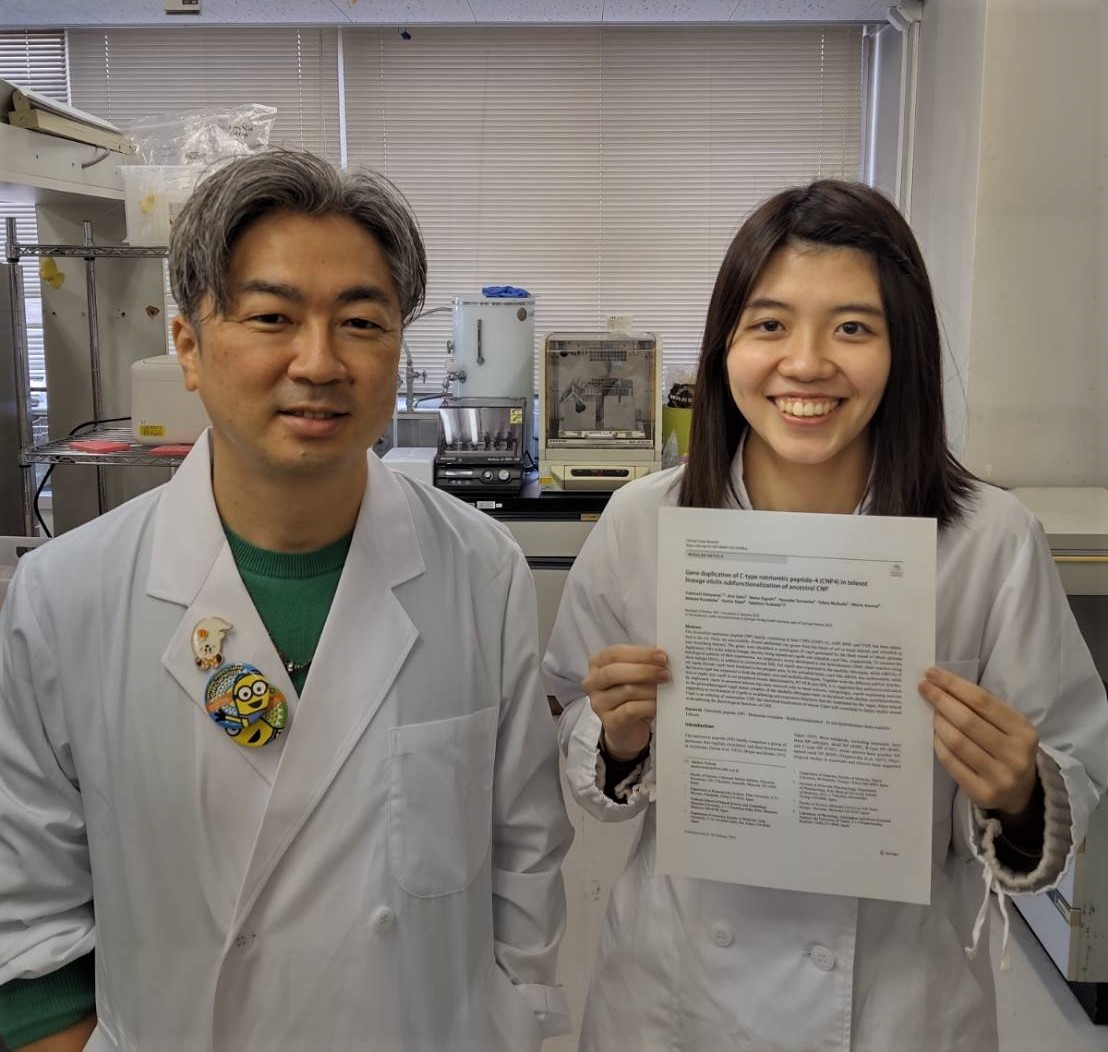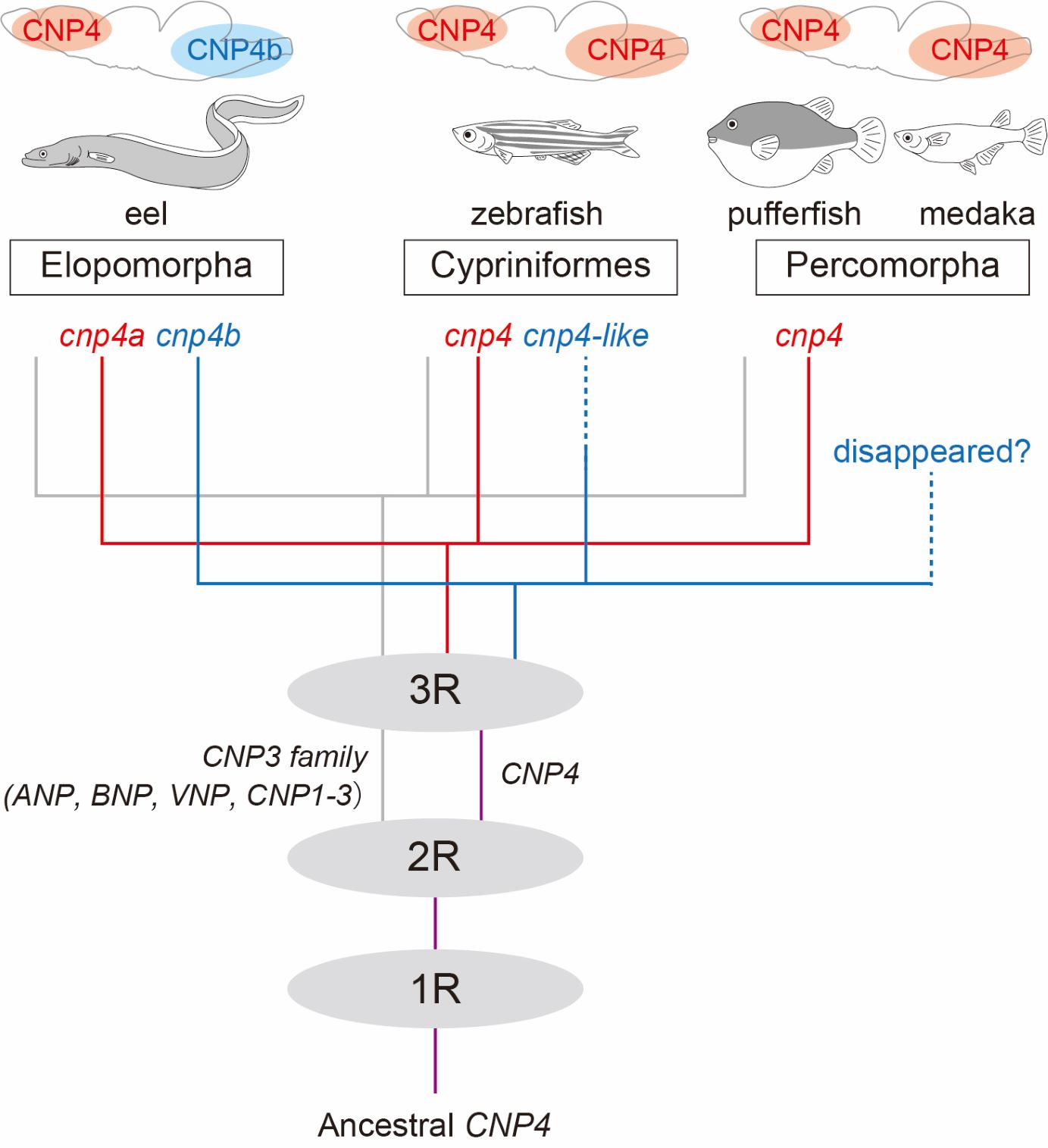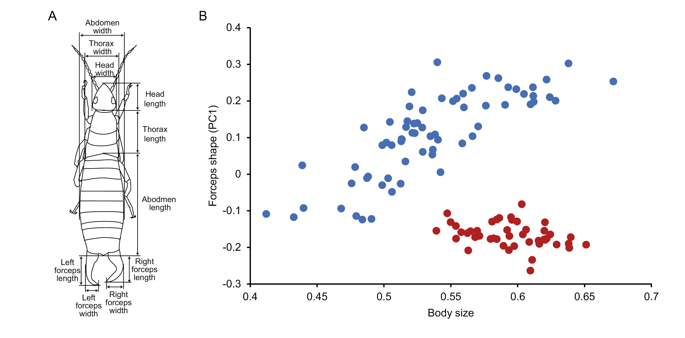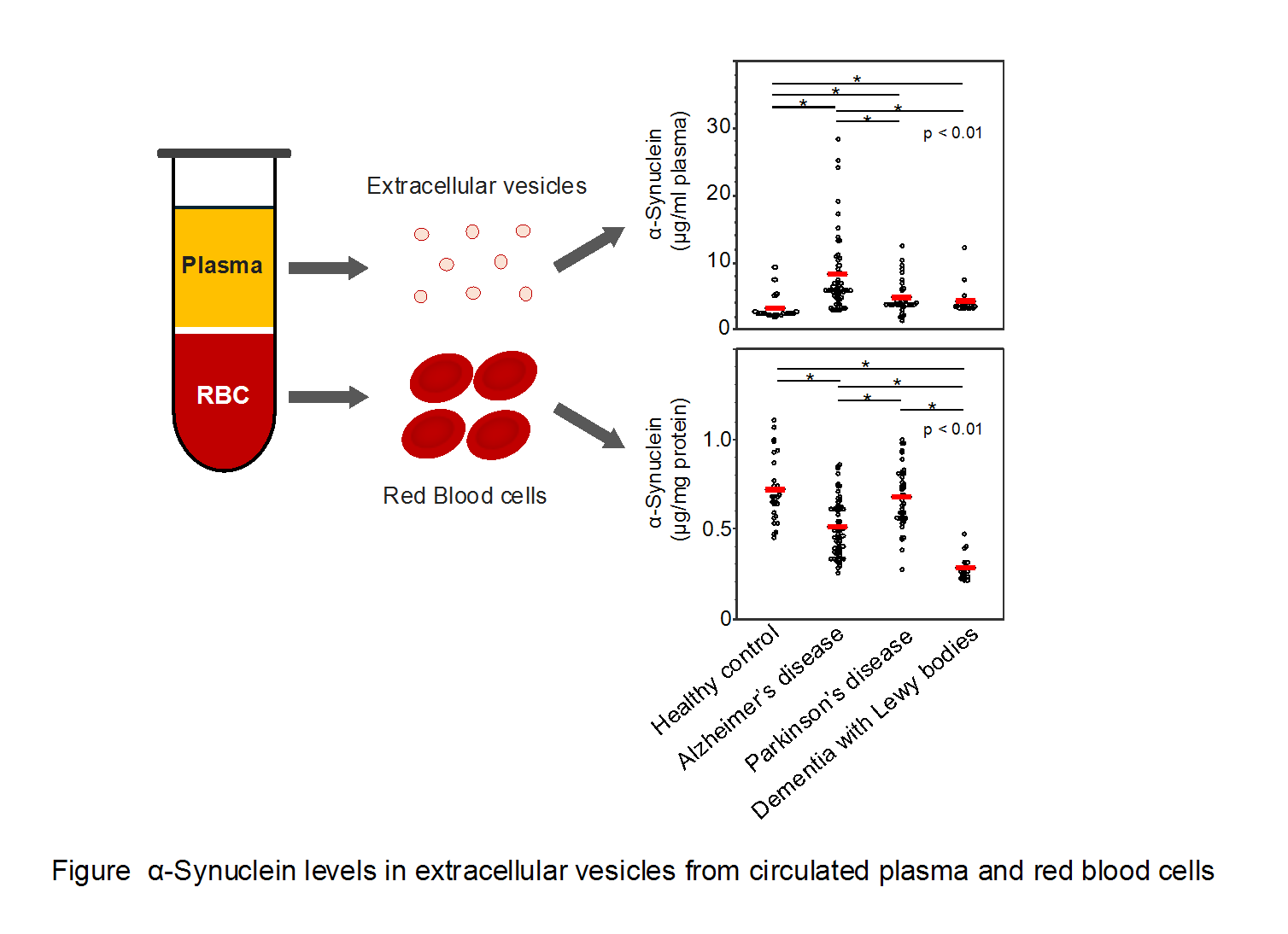February 21, 2022
Discovery of a novel natriuretic peptide (CNP4b) in Japanese eels
Decipher hidden evolution and functional differentiation of hormones using primitive teleost

Ms. Ami Saito (right)

Ms. Ami Sato (right)
Key points
- A new natriuretic peptide (CNP4b) was discovered in Japanese eel.
- This research clarified the relationship between molecular evolution and functional differentiation of natriuretic peptides.
- The in situ hybridization chain reaction method using fluorescently labeled short hairpin DNA was demonstrated for the first time in non-vertebrate species.
Summary
The natriuretic peptide family consists of ANP, BNP, and CNP. ANP and BNP are hormones secreted by the heart to regulate blood pressure. CNP is a hormone produced in the brain, but its central function remains unclear. A research group led by Dr. Tsukada has shown that CNP genes have diversified during vertebrate evolution. In particular, four CNP genes (CNP1-4) have been found in teleost (compared to one in mammals), suggesting that the hormone is important for brain function in fish. In this presentation, they report the discovery of a fifth CNP gene (CNP4b) in Japanese eels. The research group has also found that other teleosts do not possess CNP4b gene, and that CNP4 compensates a function of CNP4b. This study sheds light on the scientifically hidden molecular evolution of the natriuretic peptide family and provides important data on the relationship between genetic diversification and functional differentiation.
The natriuretic peptide family consists of ANP, BNP, and CNP. ANP and BNP are hormones secreted by the heart to regulate blood pressure. CNP is a hormone produced in the brain, but its central function remains unclear. A research group led by Dr. Tsukada has shown that CNP genes have diversified during vertebrate evolution. In particular, four CNP genes (CNP1-4) have been found in teleost (compared to one in mammals), suggesting that the hormone is important for brain function in fish. In this presentation, they report the discovery of a fifth CNP gene (CNP4b) in Japanese eels. The research group has also found that other teleosts do not possess CNP4b gene, and that CNP4 compensates a function of CNP4b. This study sheds light on the scientifically hidden molecular evolution of the natriuretic peptide family and provides important data on the relationship between genetic diversification and functional differentiation.

Evolution of natriuretic peptide family in teleost
Journal:
Cell and Tissue Research (Published online on February 16, 2022)
Title:
Gene duplication of C-type natriuretic peptide-4 (CNP4) in teleost lineage elicits subfunctionalization of ancestral CNP
Authors:
Yukitoshi Katayama, Ami Saito, Maho Ogoshi, Yousuke Tsuneoka, Takao Mukuda,Morio Azuma, Makoto Kusakabe, Yoshio Takei, Takehiro Tsukada
DOI Number:
10.1007/s00441-022-03596-y
Cell and Tissue Research (Published online on February 16, 2022)
Title:
Gene duplication of C-type natriuretic peptide-4 (CNP4) in teleost lineage elicits subfunctionalization of ancestral CNP
Authors:
Yukitoshi Katayama, Ami Saito, Maho Ogoshi, Yousuke Tsuneoka, Takao Mukuda,Morio Azuma, Makoto Kusakabe, Yoshio Takei, Takehiro Tsukada
DOI Number:
10.1007/s00441-022-03596-y
READ MORE RESEARCH NEWS - SCIENCE
ACADEMICS
Undergraduate Programs
– Medicine
– Pharmaceutical Sciences
– Science
– Nursing
– Health Science
Graduate Programs
–Medicine
–Pharmaceutical Sciences
–Science
–Nursing
Undergraduate Programs
– Medicine
– Pharmaceutical Sciences
– Science
– Nursing
– Health Science
Graduate Programs
–Medicine
–Pharmaceutical Sciences
–Science
–Nursing
RESEARCH
– News
– Guidelines & Policies
– Support Offices
– Facilities
– Security Export Control
Non-Degree Programs
– Clinical Elective Program
– International Physician Observership Program




